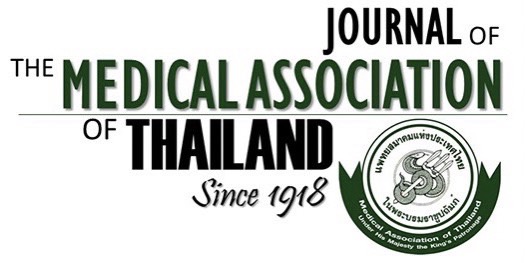Perioperative Renal Function Following Suprarenal Aortic Cross-Clamping Without Renal Perfusion in Open Surgical Repair for Juxtarenal Abdominal Aortic Aneurysm
Titi Saichuea¹, Nuttapon Susaengrat², Jarruprot Tuangsirisup², Pak Hanaroonsomboon²
Affiliation : ¹ Division of Vascular Surgery, Department of Surgery, Roi Et Hospital, Roi Et, Thailand; ² Division of Vascular Surgery, Department of Surgery, Khon Kaen Hospital, Khon Kaen, Thailand
Background: In the surgical treatment of juxtarenal abdominal aortic aneurysm (JAAA) using the open surgical repair (OSR) approach, suprarenal aortic cross-clamping is necessary. However, the utilization of this clamp may affect renal function.
Objective: To evaluate the impact of suprarenal aortic cross-clamping without intraoperative renal artery perfusion on JAAA and its subsequent impact on perioperative renal function by analyzing mean differences in creatinine levels and the estimated glomerular filtration rate (eGFR).
Materials and Methods: Between January 2017 and December 2023, the author included 19 patients diagnosed with JAAA who underwent OSR utilizing a suprarenal aortic cross-clamping without intraoperative renal artery perfusion. The analysis focused on perioperative renal function outcomes.
Results: The average renal ischemic time was 29.6±5.9 minutes. Postoperatively, the mean differences in creatinine between the preoperative period, which was 1.13±0.51 mg/dL and the seventh postoperative day, which was 1.28±1.05 mg/dL, was 0.151 mg/dL (95% CI –0.297 to 0.598, p=0.510), and the mean differences in creatinine between the preoperative period, which was 1.13±0.51 mg/dL, and the thirtieth postoperative day, which was (1.17±0.63 mg/dL) were 0.041 mg/dL (95% CI –0.250 to 0.332, p=0.782). Regarding the average mean differences in eGFR between the preoperative period, which was 72.26±24.63 mL/min/1.73 m² and the seventh postoperative day, which was 72.84±26.20 mL/min/1.73 m², was 0.579 mL/min/1.73 m² (95% CI –9.869 to 11.027, p=0.915). Similarly, the average mean differences in eGFR between the preoperative period, which was 72.26±24.63 mL/min/1.73 m² and the thirtieth postoperative day, which was 72.26±24.47 mL/min/1.73 m² was 0.00 mL/min/1.73 m² (95% CI –9.412 to 9.412, p=1.000).
Conclusion: The suprarenal aortic cross-clamping without intraoperative renal artery perfusion can be utilized in the OSR for JAAA without causing harmful effects on renal function. However, minimizing renal ischemia duration remains crucial to reducing the risk of complications.
Received 30 June 2025 | Revised 17 August 2025 | Accepted 18 August 2025
DOI: 10.35755/jmedassocthai.2025.10.784-790-02814
Keywords : Juxtarenal abdominal aortic aneurysm; Suprarenal aortic cross-clamping; Intraoperative renal perfusion; Renal ischemic time
All Articles
Download



